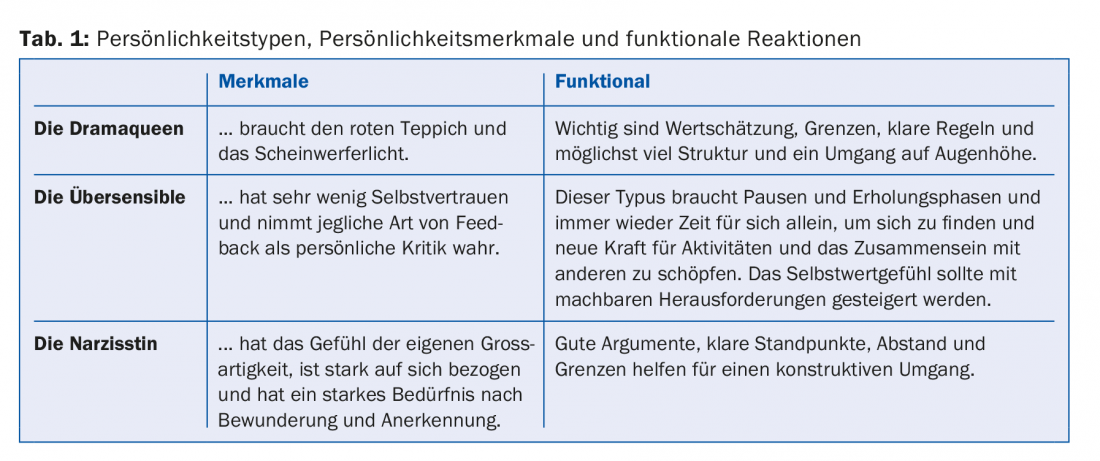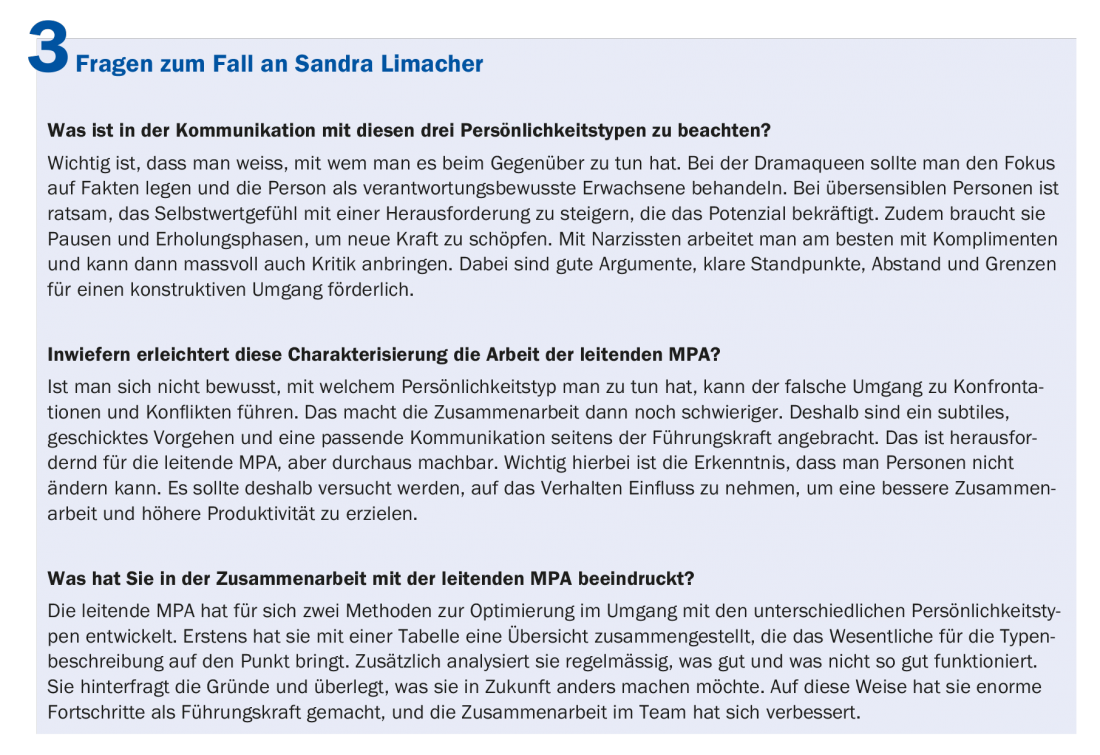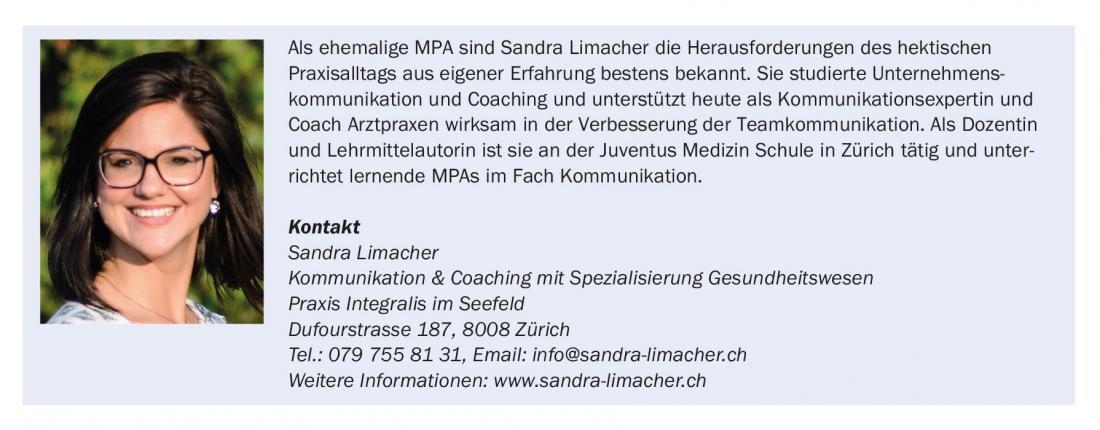Drama queen, narcissist or oversensitive? As a leader, it is important to know the personality of your employees. This is the only way to break through negative behavior patterns in the team and promote productive cooperation.
The case: A senior MPA described her case: “Our practice team is characterized by three striking personality types. One person always puts himself in the center, the other has a deep self-confidence and perceives any kind of feedback as personal criticism. The third person is an egocentric personality who takes every opportunity to distinguish himself. The differences and idiosyncrasies bring unrest into the team and pose great challenges for me as a manager. How can I promote cooperation in the future so that we gain strength as a team?”
First analysis: If you want to promote cooperation with different personalities, it is inevitable to understand the behavioral patterns of the different personalities and to go through possibilities for dealing with them. Here we are talking about the following three types: 1) the drama queen, 2) the oversensitive and 3) the narcissist.
Coaching approach: In a leadership coaching session, the senior MPA described to me typical situations with the different personality types of her team. She emphasized how important good cooperation is to her, precisely because she holds each and every one of her colleagues in high esteem. In a first step, it was important to name and characterize the three personality types in general and independent of the person: 1) the drama queen, 2) the oversensitive and 3) the narcissist. In a second step, the questions “What characterizes this personality type?”, “What works well in interaction and causes positive, functional reactions?” and “What does not work at all and causes negative, dysfunctional reactions?” were worked on:
- Functional and dysfunctional interactions were discussed for each personality type, with response options that would positively or negatively reinforce the behavior.
- Through this juxtaposition, the lead MPA became aware of what behaviors were productive and counterproductive to each personality and what was conducive or inhibiting in the collaboration.
- The MPA managed to run through various scenarios and possibilities of everyday life. This allowed her to see how she could specifically influence behavior and outcomes.
- We tested the elaborated behaviors with role plays. This has given the lead MPA confidence in performing.
Results:
- The lead MPA characterized the three personality types in leadership coaching.
- She was able to create an awareness of the functional and dysfunctional use of each personality type.
- She came to the realization that she cannot change people, but can try to positively influence behavior.
- The MPA discovered for herself that every everyday situation is a learning field for the further development of her own personality.
Transfer to everyday practice: The MPA translated the findings from the leadership coaching into her everyday life. It had proved helpful to summarize the personality types, their characteristics and functional responses in a table (Tab. 1).

In the beginning, the MPA felt a bit insecure. However, the table gave her security. The more aware she became of dealing with the different personality types, the better the teamwork worked. In addition, there was open communication within the team about who worked how and who needed what in order to work well together. Each personality was thus allowed space and time for the “idiosyncrasies”, however, new dynamics and forms of cooperation could emerge through the group, which turned out to be an asset.
Conclusion: “We cannot change the individual personalities. But it is certainly possible to influence typical behavior patterns in order to achieve better cooperation throughout the team,” the senior MPA stated after the coaching.


HAUSARZT PRAXIS 2018; 13(10): 10-11












